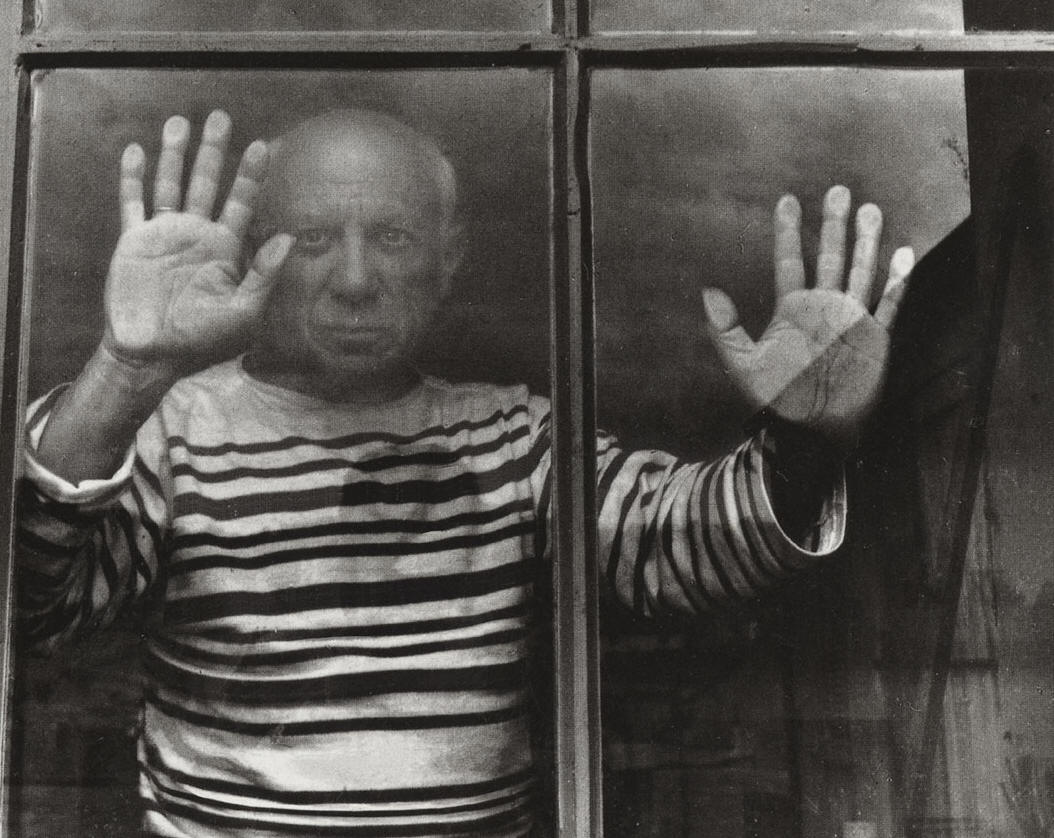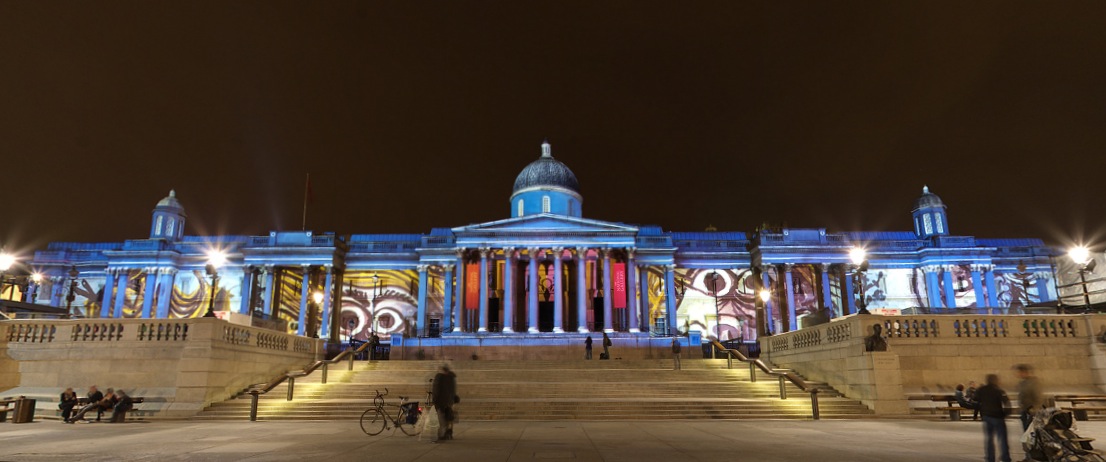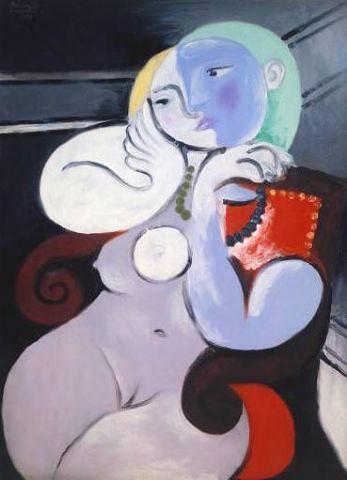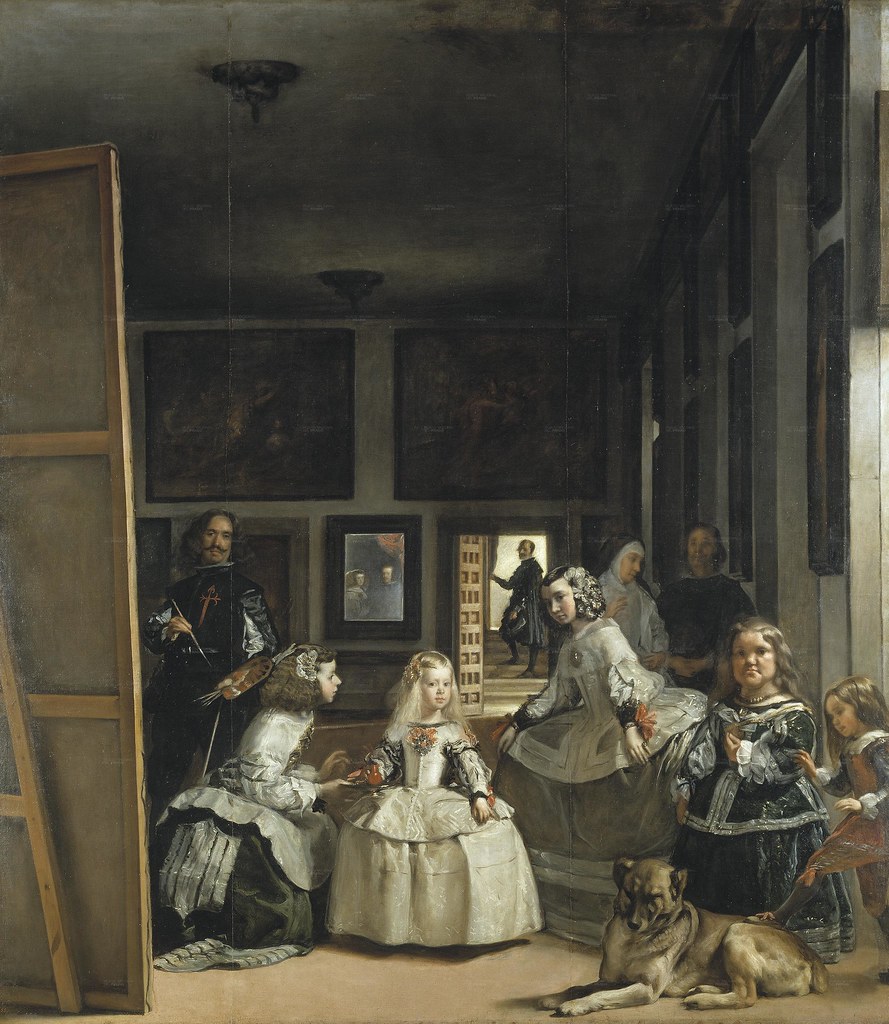
After seeing The Raft of the Medusa by Eugène Delacroix (French, 1798-1863) Théodore Géricault (French, 1791-1824), a friend recorded Picasso saying: “That bastard! He was good.”
The exhibition, Picasso: Challenging the Past, currently on show at the National Gallery in London, is a well-documented testament to the artist’s admiration for artists that he made posthumous collaborators in his work, among them Goya, Velázquez, Poussin, Ingres, and El Greco.

Lest visitors think that Pablo Picasso (Spanish, 1881-1973) had betrayed or diluted his innovative impulses, the introductory paragraph to the exhibition–boldly written on the wall near the entry–states “he certainly was not a slave to the canon.” Thus, a confusing tone was set, turning up throughout the exhibition, that simultaneously attempted to admire Picasso’s admiration for “traditional” artists while, in some cases, denying them admiration.

An example was the exhibition’s treatment of Ingres. Making a comparison between the National Gallery’s Portrait of Madame Paul-Sigisbert Moitessier by Jean Auguste Dominique Ingres (French, 1780-1867) to Picasso’s Nude Woman in a Red Armchair, the exhibition claimed that Ingres, like Picasso “idealized eroticism,” and that “the more one looks at Ingres, the less plausible his work seems.” According to the film accompanying the exhibition, Ingres’ arms and fingers appear to have no bones, and figures seem dramatically out of distortion, as if they were anticipating Picasso’s work. It seemed like revisionism. (See my previous post on Ingres’ careful attention to the human figure.) It was as though Ingres could not be appreciated on his own terms, but only on Picasso’s.

Seeing Picasso’s works, I don’t necessarily think that he would have shared this perspective. There is no denying the copious amounts of time he spent reworking Diego Velázquez’s (Spanish, 1599-1660) Las Meninas or the Rape of the Sabines by Nicolas Poussin (French, 1594-1665). This is what makes Picasso great: his simultaneous departure from and use of classical themes. As I walked through the exhibition I was remineded of F. Scott Fitzgerald’s comment: “The test of a first-rate intelligence is the ability to hold two opposed ideas in the mind at the same time, and still retain the ability to function.” Despite the startling variety of his output–one piece reflects his classical training, another is nearly completely abstract, a work full of color, and another nearly void of spectrum–Picasso confidently comes across in each painting.

The exhibition seemed organized for those who already love and acknowledge Picasso as part of the canon. As such, it was, at first, difficult for me–someone who still struggles to relate to his works–to approach. However, the more I looked directly at the works, the more approachable they became. Despite the exhibition’s sometimes revisionist treatment of “the canon,” it was an ideal primer to his oeuvre. Deciphering Picasso’s translation of Las Meninas by Velázquez, for example, kept me occupied for at least 30 minutes and provided numerous insights into Picasso’s pictoral devices. It was a Rosetta Stone for Picasso.

A mentor of mine is fond of saying that “art is very personal.” Personally, Picasso is a shock to my natural inclinations. However, I admire his genius and, with the help of this exhibition, found myself thinking: “That bastard! He was good.”
I enjoyed your review of the Picasso show. You may have already received comments about this — The Raft of the Medusa was painted by Théodore Géricault, not by Eugène Delacroix.
Thanks for catching that . . . I don’t know where my mind was.
Our gratitude for your precise, articulate writing. This blog is better informed than most reviews, critiques and Symposia. I have participated in academia. You are never overbearing or coarse. Your blog should be required reading at every American learning institution that teaches art.
I saw Picasso’s career-spanning retrospective in the mid-1990’s at LACMA in Los Angeles. The double-speak and uneasiness of institutions’ desire to brand Picasso in a certain way was easily identifiable to me even as a sophomore in high school.
I too, spent many hours at that show, and even as a very naive boy I knew I was before something significant – in spite of curators desire to think for me. The feelings and needs to, “admire Picasso’s admiration for “traditional” artists while, in some cases, denying them admiration” is spot on.
Finally, a Reasoned perspective on Pablo Picasso.
Thanks — great post! I see you’ve been traveling.
Decades ago (1972?…), Robert Rosenblum wrote the Ingres monograph for Abrams. His analysis of the great female portraits was among the first really compelling works of art history I ever read. He wrote about some curious conventions Ingres used — painting volumetric forms as if they were flat (the edge of the abdomen of a bather), squeezing too much mass into too small a corner (Mme. Haussonville), adding two vertebrae to another bather’s back — all this for the logic of the picture space rather than verisimilitude, and for breaking down the elements of the composition into a pattern rather than setting up an illusion of forms receding in space, the better to create a sense of enclosure. Hence, the almost aural quality of the stillness one feels when looking at these images. And the slight feeling, on the viewer’s part, of being disoriented that makes these portraits more confrontational and arresting — more iconic — than those by other mid-19th century painters.
There must have been some better reason for these conventions than to give Picasso more to work with! But in the 1970’s, we lived in a Pablocentric world — all roads led to him. Maybe it’s only a question of how vividly an artist can inhabit art history, since he cannot really overturn it — despite labors of repudiation that, seen from the right distance, are but a coming to terms.
Picasso’s “Nude Women in Red” is like a stick of cotton candy in the hands of a young boy jaunting through eternity; and eternity’s name: Miss Donna Jean Godchaux.
that was Absorbing
Loved this post! so much that I linked to it on my blog! I will keep coming back here and put you in my blog roll!.
Cheers,
Donna
Where are you? Anxiously awaiting. Regards.
Thank you for your gentle and necessary prodding! My wife recently gave birth to our second son, and I have used that as an excuse to fall behind in all kinds of things.
I’m glad I didn’t lose you.
really enjoyed the review, good idea to display so vividly 3 of picasso’s works and the old masters and concentrate on those with some succinct comments and overall impressions. I went to see the exhibition in may and enjoyed it, read a lot of reviews that were quire indifferent to the concept and layout of the exhibition but it worked well enough for me